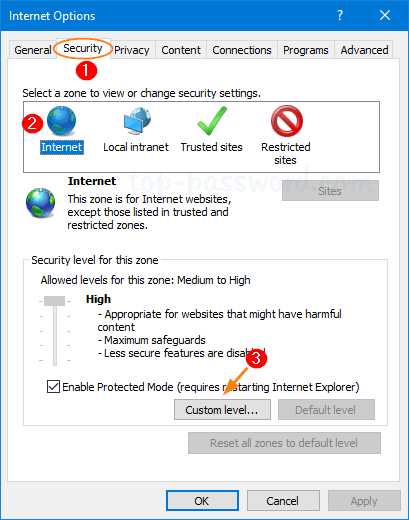

- Windows server 2008 security settings locked update#
- Windows server 2008 security settings locked download#
- Windows server 2008 security settings locked windows#
Users/Administratives Templates/Ctrl Panel/Personnalization/Enable screen saver : enabled

My workaround is to come back to the good old “screen-saver” although stamped as deprecated.Ĭomputer/Security settings/Local Policy / security options /interactive logon machine activity limit : 0. The result of that bad design is that Users setting for lock screen is governed by the Computer setting and can’t be changed by regular users for their own preferences. Screen Power being driven on the client-side. Powering-off screen is a nonsense is a RDSH environnement. Microsoft made and aggregation / confusion between Lock screen and Power-off screen. XMR: 49UCmvAYNxB3voEVbfL8KDENwcg9SE9PeY5jU8YCaHMuLXHapRmfhgHWbwaVe4vUMveKAzAiA4j8xgUi29TpKXpm3xumqCq
Windows server 2008 security settings locked download#
For now you can find the download in my personal OneDrive here.ĮTH: 0x096a12424e991696ad21cfc0e0f3749ab4f8ce1b
Windows server 2008 security settings locked update#
Update (March 17th 2021): TechNet gallery, r.i.p. You can download the executable in the TechNet gallery. I’m running it in my own labs which I use with multiple users frequently and have not encountered any issues yet. Yes, but only with a maximum of 15 users so far. Have you tested this? In production environments? I also reference Kernel32.dll to throw any errors caused by those two functions. I’m referencing User32.dll for the actual screen locking and for checking user idle time.
Windows server 2008 security settings locked windows#
What DLLs do you reference in your code, since you mentioned you referenced native Windows DLLs? I used a C# Windows Forms application template in Visual Studio 2017. What language was the executable programmed in? You say you grabbed Visual Studio to create the executable. User 3 and User 4 have just entered the lock state. User 2 is in a screen locked state for about 30 minutes. Here’s a screenshot of a demo environment with 5 users logged on: Or simply use whatever solution you have in place for this. In Citrix you can use WEM to create an external task, also defining the maximum allowed idle time as a parameter: You can reference the executable in a user logon script and define the maximum idle time as a parameter: If you do not provide a maximum idle time in seconds, the executable defaults to 10 minutes (600 seconds). In the user’s context, start the executable with a single command line argument (parameter) defining the maximum idle time in seconds before the user’s screen will be locked. Net framework so it will work on any Windows Server operating system. It is a single executable file that is built on the. It uses native Windows DLLs to query the user idle time and to lock the session screen. I grabbed Visual Studio and created a little program that will lock the user’s session screen after a certain amount of idle time. The Notes on these settings suggest using the power options, but I didn’t have much luck configuring the individual user’s power settings in server based computing (virtual desktop) environments. So, the settings are obsolete, in other words, do not use them. If you check the same settings in those GPOs, you’ll find them changed. In comes Windows Server 2016 and the related. Easypeasy, force the blank screensaver, set a timeout, require password. Here you’ll find the settings related to the Screensaver options. In Windows Server 2008 R2 you could use the Group Policy Objects (GPOs) for this, and more specifically, in the settings found in User Configuration – Policies – Administrative Templates – Control Panel – Personalization. They had a BYOD policy, no company managed devices, and they did not want to enforce policies in any way on those devices. For this customer it was not an option to handle this on the client device. One of the requirements this customer had was that the session was locked (lock screen) automatically after a certain period of time. This included the server OS used in the XenApp workers. A customer had a XenApp environment based on Windows Server 2008 R2 which needed to be upgraded to all the latest versions.


 0 kommentar(er)
0 kommentar(er)
